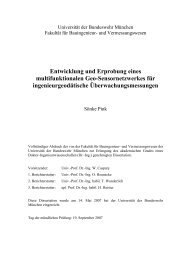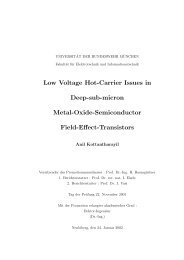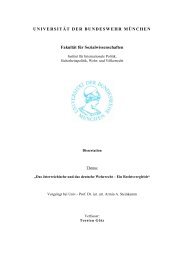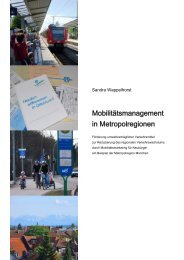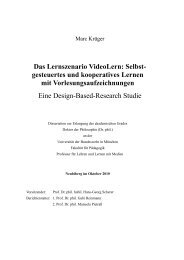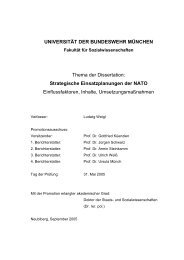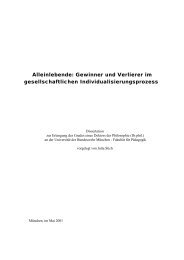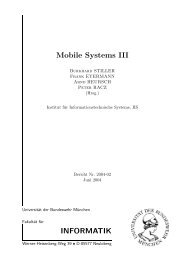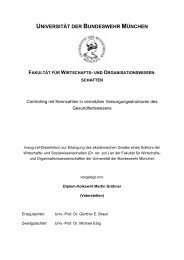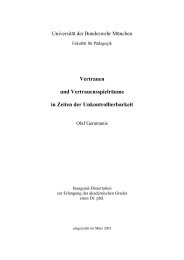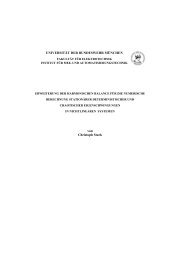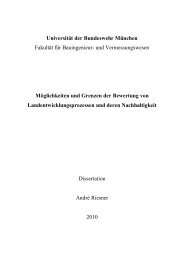Satellite Orbit and Ephemeris Determination using Inter Satellite Links
Satellite Orbit and Ephemeris Determination using Inter Satellite Links
Satellite Orbit and Ephemeris Determination using Inter Satellite Links
- No tags were found...
Create successful ePaper yourself
Turn your PDF publications into a flip-book with our unique Google optimized e-Paper software.
<strong>Inter</strong> <strong>Satellite</strong> <strong>Links</strong>Autonomous Onboard Processing• providing two frequencies to allow ionospheric corrections• increasing chipping rate on the ranging signal• increasing update rates of broadcast ephemeris• <strong>using</strong> accurate broadcast models / short fit intervals• <strong>using</strong> accurate clocksAvailability, especially with respect to visibility of enough S/V to perform navigation, isdriven by constellation design, <strong>and</strong> can be enhanced by• putting enough S/V into service (actives, as well as spares <strong>and</strong> replenishment)• choosing benign orbits with respect to visibilityThe last two parameters are a bit more critical. They are mainly driven by reliability of thespace vehicles <strong>and</strong> environmental influences degrading the signal-in-space like RFinterference, atmospheric effects or jamming. Keeping these parameters high is of utmostinterest for civil aviation.System inherent continuity <strong>and</strong> integrity of the two existing navigation systems GPS <strong>and</strong>GLONASS does not meet the requirements of civil aviation <strong>and</strong> can therefore be not used as asole means of navigation. To overcome system limitations with respect to integrity,augmentation systems like WAAS, EGNOS <strong>and</strong> MSAS are under development. Their mainoutput are corrections for• ionospheric effects• satellite clock• satellite ephemerisemitted by geostationary Inmarsat space crafts. A central processing facility has torecomputed satellite orbits to provide orbit <strong>and</strong> clock corrections at a high update rate. Thishas to be done for up to 51 satellites. Fast corrections which are applied directly to the rangemeasurement are provided at an update interval smaller than 6 seconds to meet time-to-alarmrequirements for CAT I. So called “long term” corrections provide vector corrections forposition <strong>and</strong> velocity which are updated approximately every 6 minutes. Both, fast <strong>and</strong> longterm corrections have to be applied additionally to the broadcast ephemeris transmitted by theGPS <strong>and</strong> GLONASS space crafts.Summarising the measures taken to enhance integrity we find1. ephemeris correction2. at a high update rate3. with minimum data latency4. <strong>and</strong> corrections to the ionospheric effectsFuture satellite navigation systems like Galileo will provide at least dual or maybe even triplefrequency links. Even the existing GPS system is going to be enhanced <strong>and</strong> the nextgeneration of replenishment satellites (starting with Block II F) will provide a civil availableranging code on two frequencies. What’s left, is the integrity of <strong>Satellite</strong> orbit <strong>and</strong> clock.R. Wolf Page 153



